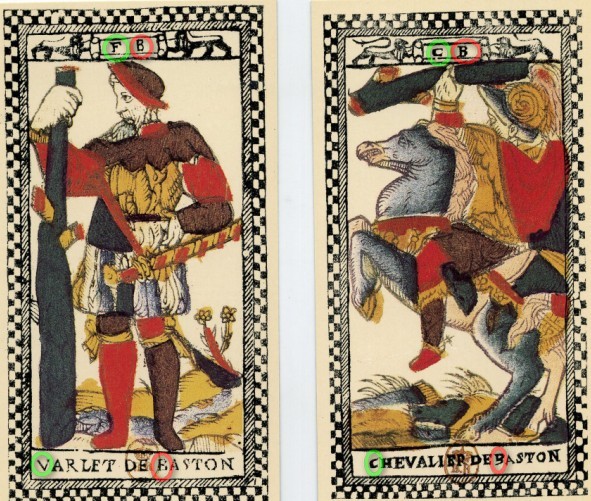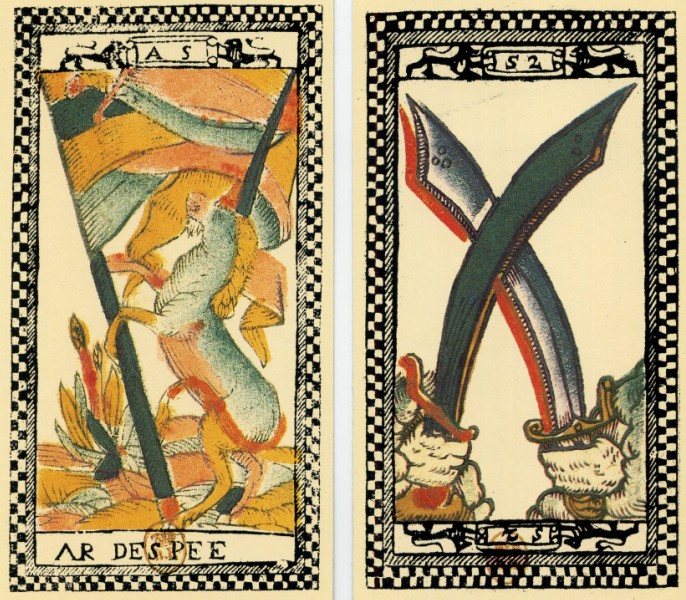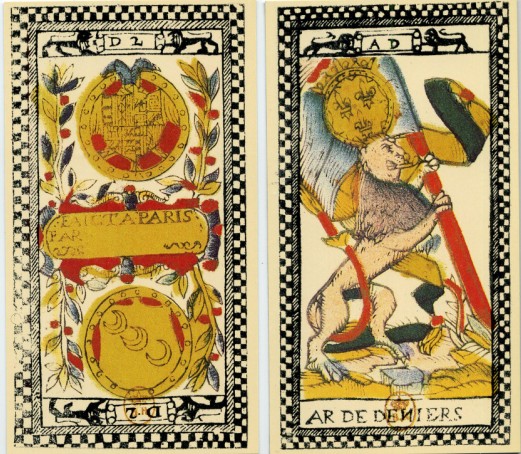Pen wrote:Thanks Huck, I must reread this thread and catch up with some others.
The linework seems consistent in style, quality and detail throughout the deck, which would suggest that the deck is complete and without later additions. And 1559 is too early for
Olimpia Maidalchini to be the inspiration for La Papessa.
The maker's name being missing from the relevant cards may indicate that this was removed because the deck in the collection was printed from woodblocks that had been bought in or taken over by a different card maker from the original. I think this may have been discussed before though.
Well, perhaps you shouldn't give up too early ...
Maybe the following interests you:
from Dummett/McLeod I p. 325
The later edition of the Charles de Brosses text seems to be this ...
http://books.google.de/books?id=qwU4AAA ... te&f=false
... and there it is letter XLIV, not XLV
Well, there is Ronciglione ... a place, which had a playing card production privilege at the territory of the Chiesa. The place had been a sort of private propriety for the Farnese. How and when they got this privilege, is not clear, actually the most important time for the Fornese was the time of Pope Paul III (1533-49) ...
http://en.wikipedia.org/wiki/Pope_Paul_III
... so it seems plausible, that the privilege somehow goes back to this time, or possibly to other privileges oof thi time, which later caused the playing card privilege. A confirmation for an early privilege is missing, but at least near the end of 16th century they seem to have had it. In 1649 there was a war around the Ferrarese territory at the Chiesa region and the Farnese lost it, so also they lost Ronciglione and the playing card production privilege. But Ronciglione itself still had the privilege till c. 1700.
There were found some Ronciglione cards and these cards were Minchiate cards.
There is a report ...
viewtopic.php?f=11&t=652&hilit=ronciglione
****************
Now we have a writer in c. 1740, assuming, that a cuurent Minchiate deck is going back to a pope Innocenz X (1644-1655), and the armies of Pope Innocenz X took the Minchiate city Ronciglione in 1649, and you claim, that the sister-of-law of pope Innocenz X has something to do do with the Papessa of the Tarot de Paris.
Further there are far reaching indications from rather complex contexts, that Minchiate was in an increasing development and Tarot interests went down in the same period.
Perhaps I don't understand your argument. I don't know, why you're fixed on the Tarot de Paris.
The Papessa was a Trionfi card already in 15th century. Papessa jokes existed already in the time of Alexander VI in context of his lover Giulia Farnese.
http://en.wikipedia.org/wiki/Giulia_Farnese
She was sister of the young cardinal, who later became pope as Paul III. Actually it was she who detected the region around Ronciglione, which the Farnese later got.
What's so remarkable with the Tarot de Paris Papessa?
We've a sort of "Egyptian style" (Sphinx) at the Pope card, and, strange enough, it's known, that Alexander VI had Egyptian ideas. But in 1559 Alexander was dead a longer time.
Robert earlier collected some Sphinx chairs:
.. at ...
viewtopic.php?f=14&t=113&start=40














